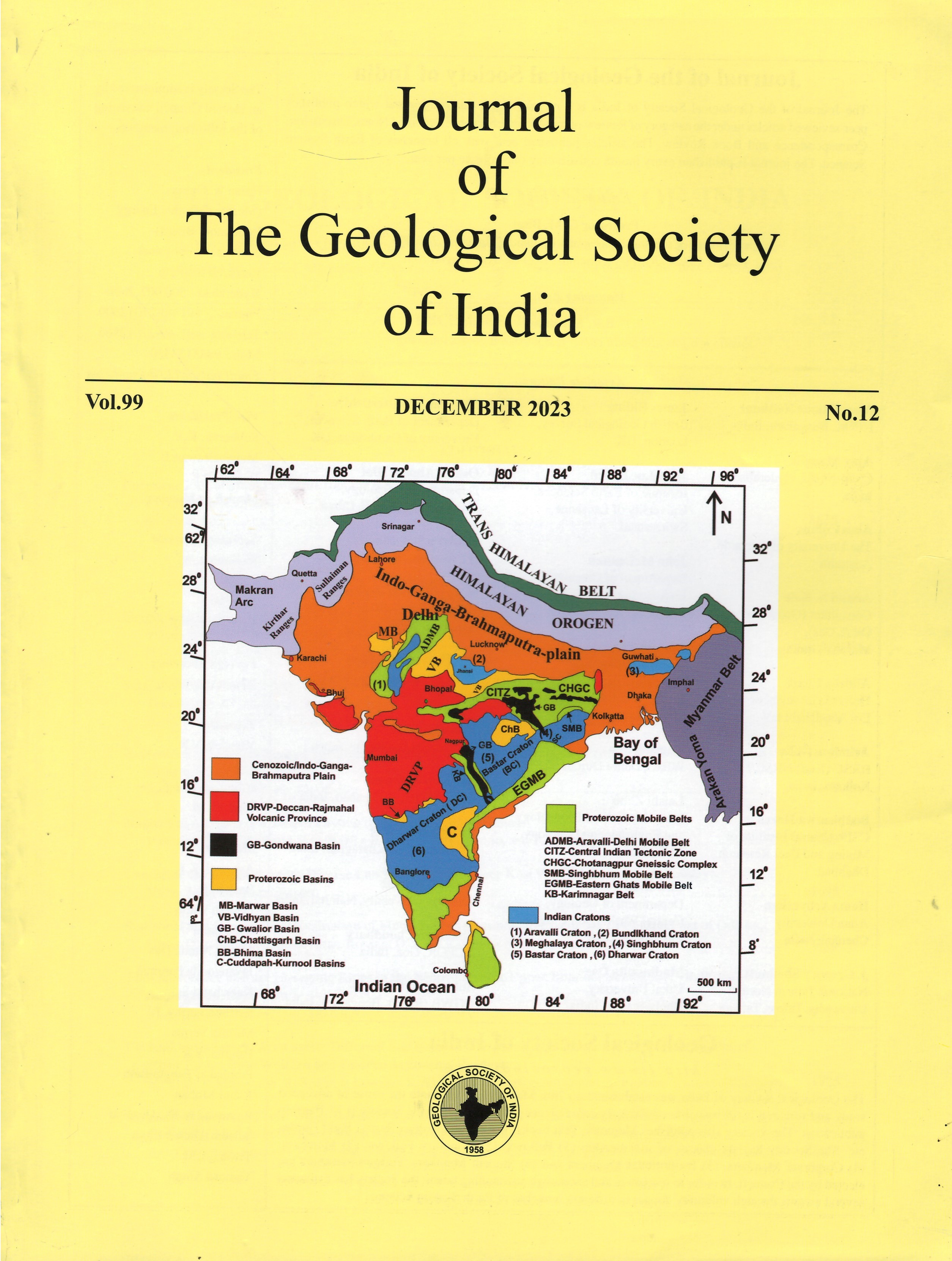The Occurrence of Rare Liesegang Rings in the Neoproterozoic Upper Bhander Sandstone, Vindhyan Supergroup, Rajasthan
DOI:
https://doi.org/10.1007/s12594-023-2527-2Keywords:
No KeywordsAbstract
The Upper Bhander Sandstone Member exposed along the Agra-Fatehpur Sikri tract near Rasulpur (Rajasthan) was investigated for a rare sedimentary structure, Liesegang rings. The studied unit also yielded other sedimentary structures such as cross-bedding, parallel lamination, ripple marks and trough cross-bedding; Liesegang rings were the most common and abundant. Two types of Liesegang rings were identified, one with a central core with outwardly radiating and alternating iron-rich (dark) and iron-poor (light) rings that were usually aligned parallel to the bedding plane (here designated as the Nucleation-type), and the other, that followed a fracture, and are composed of wavy rings (Wavy-type). The studied sandstone unit is quartzarenite type, wherein the monocrystalline plutonic quartz makes up 91% of the total framework grains. The grains are bound by two types of cementing material: silica (occurring as syntaxial overgrowth around detrital quartz grains) and iron oxide; higher amount of iron oxide and secondary porosity was noted. The formation of Liesegang rings involves iron-rich meteoric waters being infiltrated through fractures, pores and more importantly, by the formation of secondary porosity within the sandstone (diagenetic processess). Addition to this microscopic character, other factors that are responsible for the formation of Liesegang rings include surface water, suitable topographic exposure, condensed grid of joint polygons, and composition and thickness of the sandstone beds under study. Detailed microscopic analysis of rings (iron-rich and iron-poor) may provide a better understanding of the pathways of fluid movement enabling the formation of Liesegang rings.

 M. A. Quasim
M. A. Quasim






